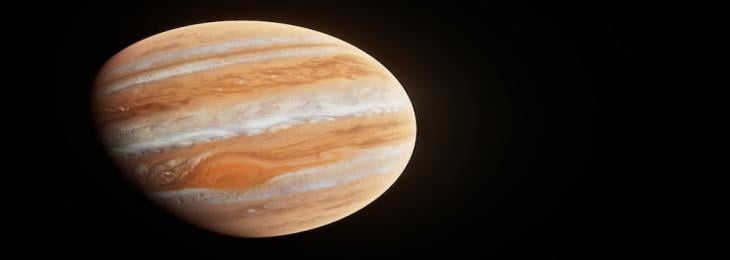
According to the data given by NASA's Juno, scientists say,Jupiter's lightning mechanisms are akin to Earth's, in spite of their vast differences.
Similar to Earth, Jupiter has green ammonia clouds and water clouds. Similar to Earth, Juno observed lightning in the clouds. Rocks predominate on Earth. Jupiter can accommodate all of the planets in the solar system, including 1,300 Earths. It was named after the Roman gods who launched lightning bolts. Jupiter's lightning-starting systems pulse at the same frequency as Earth's clouds, according to five years of high-resolution data from Juno's radio instrument. Lightning on Jupiter began in milliseconds, just like clouds on Earth.
Lightning is the most powerful electrical generator on Earth. Lightning. Thunderstorms cause lightning. Ivana Kolmasova, a planetary scientist at the Institute of Atmospheric Physics of the Czech Academy of Sciences in Prague and lead author of a Nature Communications study published this week, said, "By means of this method, a massive electric field is generated and the discharge is initiated." Kolmasova commented, "Scientists do not fully comprehend thunderclouds, so this explanation is oversimplified." NASA's Voyager 1 found Jupiter's lightning in 1979. Saturn, Uranus, and Neptune also have electricity. It's possible Venus has lightning.
Other investigations have demonstrated additional similarities between Jupiter and Earth's electrical systems. The distribution of lightning on Jupiter differs from that on Earth, but the lightning frequencies are comparable. "The tropics are the most active regions. Jupiter's lightning rules the mid-latitudes and polar regions. At the Earth's poles, electrical activity is minimal. Kolmasova asserts that the conditions under which Jovian and terrestrial thunderclouds form are distinct. "There were attempts to compare the power of lightning based on optical measurements, and it was concluded that the lightning on Jupiter may be comparable to the strongest lightning on Earth," Kolmasova said, adding that further research is planned.
Jupiter is primarily composed of hydrogen and helium, with trace amounts of other gases. Stripes and storms dominate the colorful aspect of Jupiter. Since 2016, Juno has studied Jupiter's atmosphere, interior structure, internal magnetic field, and magnetosphere.






